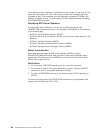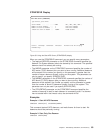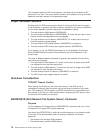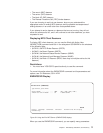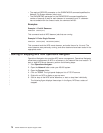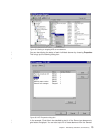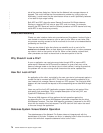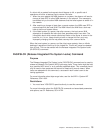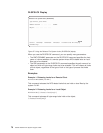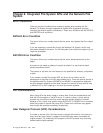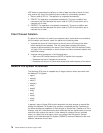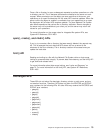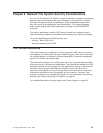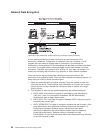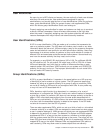
RLSIFSLCK Display
When you use the RLSIFSLCK command, you can specify many parameters:
v The RMTLOCNAME parameter on the RLSIFSLCK command specifies the host
name or internet address of a remote system whose NFS-related locks on local
files are to be released.
v The OBJ parameter on the RLSIFSLCK command specifies the path name of an
object on which all byte-range locks are to be released. This will release all locks
on that object, regardless of the type of lock or the type of process that holds
them.
Examples
Example 1: Releasing Locks for a Remote Client.
RLSIFSLCK RMTLOCNAME('TULAB2')
This command releases the NFS-related locks that are held on local files by the
system TULAB2.
Example 2: Releasing Locks for a Local Object.
RLSIFSLCK OBJ('/classes/class2/proj3')
This command releases all byte-range locks held on the object
/classes/class2/proj3.
Release File System Locks (RLSIFSLCK)
Type choices, press Enter.
Remote location ........ TULAB2
Object.............
Bottom
F3=Exit F4=Prompt F5=Refresh F12=Cancel F13=How to use this display
F24=More keys
Figure 57. Using the Release File System Locks (RLSIFSLCK) display
76 OS/400 Network File System Support V4R4



